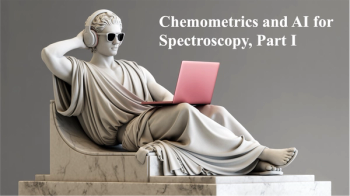
Stephen Cramer Receives EAS Award for Outstanding Achievements in Vibrational Spectroscopy
Stephen Cramer of the University of California, in Davis California, will be presented with the EAS Award for Outstanding Achievements in Vibrational Spectroscopy at the Eastern Analytical Symposium (EAS), taking place in Princeton, New Jersey on November 12–14.
Stephen Cramer of the University of California, Davis, in Davis, California, was presented with the EAS Award for Outstanding Achievements in Vibrational Spectroscopy at the Eastern Analytical Symposium (EAS), in Princeton, New Jersey, on November 13. Cramer is an advanced light source professor at UC Davis.
Cramer’s PhD thesis work under Keith Hodgson involved the first extended X-ray absorption fine structure (EXAFS) studies of metalloenzymes at the newly founded Stanford Synchrotron Radiation Project, along with Raman spectroscopy and coherent anti-stokes Raman spectroscopy (CARS) with Bruce Hudson. Following work as a National Institutes of Health (NIH) postdoctoral researcher at California Institute of Technology, Cramer joined Exxon Research in New Jersey, followed by Schlumberger-Doll Research, then continued to the National Synchrotron Light Source at Brookhaven National Laboratory. He then joined UC Davis in a joint position with the Lawrence Berkeley National Laboratory.
Cramer’s research has focused on synchrotron-based spectroscopic techniques for chemicalcharacterization of biological systems and complex materials. Despite heavy involvement with X-rays, vibrational spectroscopy has remained dear to his heart. His favorite technique, nuclear resonance vibrational spectroscopy (NRVS), merges these two field-a synchrotron x-ray experiment that provides vibrational information. His current research emphasizes the enzymes that fix nitrogen (nitrogenase) or produce hydrogen (hydrogenase).
Cramer has been honored with the ACS Spectrochemical Analysis Award, the Edward Stern Outstanding Achievement Award from the International X-Ray Absorption Society, the Lu Jiaxi Lectureship from Xiamen University, the New York Society for Applied Spectroscopy Gold Medal, a Humboldt Foundation Research Award, and an Einstein Visiting Fellowship at TU-Berlin, and has been named an AAAS fellow.
Newsletter
Get essential updates on the latest spectroscopy technologies, regulatory standards, and best practices—subscribe today to Spectroscopy.





